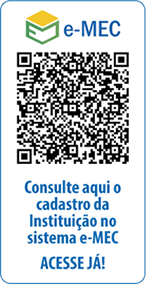VOLUME 16 - Número: 01
-
default
Projeto e análise de circuitos acopladores e divisores de sinais na faixa de radiofreqüência utilizando microlinha de fita
Alex Estevão & Antonio Alves Ferreira Júnior
Abstract: This work presents the principle of operation and design equations for the directional and hybrid couplers and power dividers in the radiofrequency band, implemented with microstrip line. The main characteristics and properties of the transmission line, scattering parameters, and some performance evaluation parameters, are discussed. Design examples, simulations performed using the Genesys software, and measurements with a vector network analyzer are presented. The simulated and measured results show agreement and validated the theoretical design. In 2.4GHz, the return loss and isolation are the order of 30dB, and the coupling values are in agreement with the design specifications.
Index Terms: directional and hybrid couplers, microstrip line, power dividers, scattering parameters.
-
default
Modelagem de um processo de especificação de equipamentos de telecomunicações utilizando redes de petri
Leticia Naresse Zambon de Oliveira, Carlos Frajuca & Fransciso Yastami Nakamoto
Abstract: The continuous technology development of telecommunications components and equipment provides many options to reach client necessities. Consequently, the activities control of productive process is critical to assure product flexibility to client and a market differential for company. Moreover, the quality of project bill of materials for installation of telecommunications equipment is critical to keep costs within limits of forecast project budget. Mistakes on quantities or lack of materials to accomplish equipment installation in field results in delivery delays and project costs increase. This paper aims to present the results of analysis and automation for the process of elaborating bill of materials for mobile telephony equipment.
Index Terms: Petri Nets, PFS (Production Flow Schema), Requirements analysis (design specifications), Telecommunications.
-
default
Limitação de alcance em radioenlaces que operam acima de 10GHz sob chuva
Hygson Assef Pereira da Rocha & Geraldo Gil Ramundo Gomes
Abstract: Several propagation effects must be considered in the design of line-of-sight radio links. Among them, there is the attenuation due to precipitation (rainfall conditions). The objective of this paper is to present the influence of rain in limiting the range of radio links that operate on frequencies above 10 GHz, according to the Recommendation ITU-R P.530-15 and ITU-R P.838-3. The results were obtained from typical design parameters, to become a useful source of consultation to students and telecommunication engineers, seeking to understand the effects of rain in the design of line-of-sight radio links.
Index Terms: attenuation, propagation, rain, range, design, line-of-sight, links, rainfall, distance, precipitation.
-
default
Efeito da dispersão cromática no sinal BPSK em um enlace óptico com modulação de intensidade e detecção direta
Antonio Alves Ferreira Júnior, Alan Lima Lemes, Luís Antônio Ribeiro Scudeler, Tony Eduardo dos Santos de Carvalho, José Antônio Justino Ribeiro & José Edimar Barbosa Oliveira
Abstract: This paper addresses the subject of optical fiber chromatic dispersion effect on the performance of a long-haul analog photonic link for RF and microwave signals transmission. An intensity modulation and direct-detection link model by using a dual-drive Mach-Zehnder modulator and a fotodetector is presented. The binary phase shift keying technique is used to modulate the RF carrier with 1Gbit/s and this signal modulates the optical carrier. An exact frequency domain analytical model is emphasized. The performance of an analog optical modulation with double and single sidebands are evaluated through eye diagram by using numerical simulations with OptiSystem software.
Index Terms: Analog optical fiber link, binary phase shift keying, chromatic dispersion, dual-drive Mach-Zehnder modulator.

